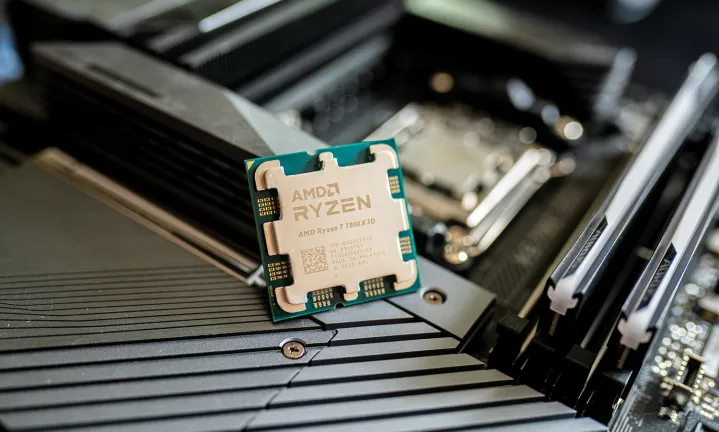Output devices play a crucial role in translating digital information into a form that is understandable and useful to users.
From the simple display of text to complex graphics and audio outputs, these devices bridge the gap between the digital world and human interaction.
This blog delves into the various types of output devices, their functions, and their significance in our daily computing tasks. On fusionhardwares you can buy any component for your computer.
What are Output Devices?
Output devices are peripherals used to communicate the results of data processing carried out by an information processing system (such as a computer) to the outside world. They convert electronically generated information into a human-readable or perceivable form.
Types of Output Devices
Output devices can be broadly categorized into several types based on the kind of output they produce: visual, auditory, and physical.
Visual Output Devices
Visual output devices are the most common type, providing a visual representation of information.
Monitors: Monitors, or screens, are the primary visual output devices. They come in various types, including LCD, LED, and OLED displays. Monitors are used to display text, graphics, and videos. The quality of a monitor is determined by its resolution, refresh rate, and color accuracy.
Projectors: Projectors take visual data from a computer and project it onto a large surface, such as a screen or wall. They are commonly used in presentations, educational settings, and home theaters.
Auditory Output Devices
Auditory output devices provide audio feedback and are essential for various applications, from entertainment to accessibility.
Speakers: Speakers convert digital audio signals into sound waves. They vary in size and quality, from simple built-in laptop speakers to high-fidelity surround sound systems. Speakers are used for listening to music, watching videos, and gaming.
Headphones: Headphones offer a more personal audio experience. They come in different types, including over-ear, on-ear, and in-ear, each offering varying levels of sound quality and comfort. Headphones are ideal for private listening and are widely used in professional audio production.
Physical Output Devices
Physical output devices produce a tangible output, often in the form of printed material or physical objects.
Printers: Printers are used to produce hard copies of digital documents. There are several types of printers, including inkjet, laser, and 3D printers. Inkjet and laser printers are commonly used for printing text and images on paper, while 3D printers create three-dimensional objects from digital models.
Plotters: Plotters are specialized printers used for printing vector graphics. They are typically used in engineering, architecture, and graphic design to produce large-scale drawings and blueprints.
The Importance of Output Devices in Modern Computing
Output devices are essential for various reasons, including enhancing user interaction, improving productivity, and supporting accessibility.
Enhancing User Interaction
Output devices make it possible for users to interact with computers effectively. Monitors provide a graphical interface that allows users to see and manipulate data. Without monitors, it would be challenging to navigate operating systems or software applications.
Improving Productivity
High-quality output devices can significantly boost productivity. For instance, a high-resolution monitor with accurate color reproduction is crucial for graphic designers and video editors. Similarly, efficient printers and plotters enable professionals to produce high-quality prints quickly.
Supporting Accessibility
Output devices play a vital role in making technology accessible to everyone. For individuals with visual impairments, screen readers and Braille printers offer alternative ways to access digital information. Auditory feedback from speakers and headphones can assist users with hearing impairments.
Advances in Output Device Technology
Technological advancements continue to improve the performance and capabilities of output devices.
Higher Resolutions and Refresh Rates
Modern monitors are now available with 4K and even 8K resolutions, providing incredibly detailed and sharp images. Higher refresh rates, such as 120Hz and 240Hz, offer smoother visuals, particularly beneficial for gaming and video editing.
Enhanced Audio Quality
Advances in audio technology have led to speakers and headphones with better sound quality, including features like noise cancellation and surround sound. These improvements enhance the overall audio experience for users.
3D Printing
3D printing technology has revolutionized the way we create physical objects. From rapid prototyping to manufacturing custom parts, 3D printers have opened up new possibilities in various fields, including medicine, engineering, and art.
Smart Output Devices
The integration of smart technology has led to the development of intelligent output devices. Smart monitors with built-in operating systems can run applications independently of a computer. Similarly, smart speakers with voice assistants can perform various tasks, such as playing music, setting reminders, and controlling smart home devices.
Conclusion
Output devices are indispensable components of modern computing, translating digital information into forms that we can see, hear, and touch. From monitors and speakers to printers and plotters, these devices enhance our interaction with technology, improve productivity, and support accessibility. As technology continues to advance, we can expect output devices to become even more sophisticated, further enriching our digital experiences.
By understanding the different types of output devices and their functions, users can make informed decisions about the peripherals they need to meet their specific requirements, whether for professional use, entertainment, or everyday computing tasks.

